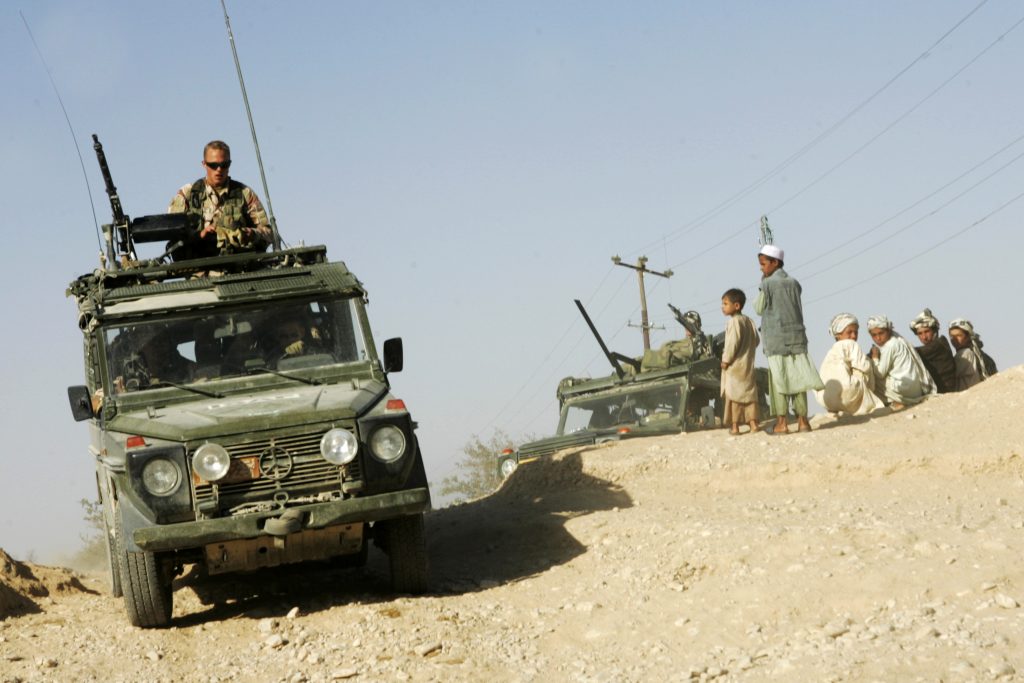(THIS ARTICLE IS MACHINE TRANSLATED by Google from Norwegian)
I visited Afghanistan as a journalist in 2007. Driving through Kabul wearing bulletproof vests in a civilian vehicle felt like a mix of Mad Max and the Dark Ages. It was worse than expected. The buildings looked fragile and barely habitable – possibly as a result of the Soviet Union's war in Afghanistan in the 1980s. We drove past a bus wreck from which smoke rose. The driver told me that a suicide bombing had taken place there a few hours earlier. The stench was even more nauseating than elsewhere in the city. Without knowing it for sure, I could almost smell burning human bodies. In the middle of the road sat a man folding his hands in prayer. It was all surreal.
Stress and coping
Several Norwegian books have been written about our military contribution in Afghanistan. For example, Warriors and diplomats (2013), where action-oriented Morten Bakkeli follows the Defense Special Command (FSK) with a heroic and somewhat pompous style that is sometimes reminiscent of clichéd kiosk literature. It removes the reader from the seriousness.
Fear and stress was a very widespread feeling among Afghanistan veterans.
Journalist Anders Hammer's book dream War (2010) are far better. Hammer lived in Kabul for a while, and writes, among other things, about what it is like to be a registered journalist among experienced Canadian soldiers. In the first chapter, Hammer writes that he wanted to experience being shot at and having a near-death experience in Afghanistan. Towards the end of 2007, the opportunity presented itself in Western Kandahar. Hammer admits that it was a kind of journalist ego that had to be satisfied: They are almost surrounded by rebels and shelled. But afterwards he concludes that it felt meaningless, selfish and lonely. These are interesting reflections.
In the new book Violence and danger of life. Norwegian and Swedish war experiences from Afghanistan Waaler reveals different emotions in soldiers who have been involved in a sharp conflict in Afghanistan. He has interviewed 28 Norwegian and Swedish soldiers about what it feels like to be in battle – and to kill. The answers he found are partly surprising: The soldier Alf tells of a meeting in Meymaneh in February 2006 – where he was hit and was extremely stressed, but also experienced mastery.

578 soldiers out of the approximately 4000 veterans who responded to a previous survey conducted by Waaler in 2012 showed that cohesion among soldiers was a key for most to do well. However, fear and stress were a very widespread feeling, especially where some were so frightened that they failed to execute orders. But Waaler also points to several positive emotions, such as mastery and joy: Soldier Nils, for example, experienced "overwhelming feelings of happiness" when it turned out that a head shot at a colleague was just a fling.
Posttraumatic
I dream War Anders Hammer also wrote about Canadian soldiers sitting and playing computer games about war – while the camp was discovered. This indifference, the author believes, may be evidence that the soldiers were developing post-traumatic stress disorder (PTSD). According to US research, more than 17 percent of US soldiers with war experience from Afghanistan and Iraq in 2007 were struggling with mental health issues.
This is significantly more than the Norwegian soldiers Waaler has now interviewed. According to his surveys, only one to two percent of Norwegian soldiers with combat experience from Afghanistan suffer from PTSD. Among the Swedish soldiers, the figure is even more uplifting – in fact, Swedish Afghanistan veterans have better mental health than the Swedish population in general.
Another theme in Waaler's book is those who do not feel so much after taking life. Or that trust ties were broken where soldiers did not perform tasks they were assigned to. The author also points out that not all combat soldiers from Afghanistan wanted to kill, even though they fought the Taliban: Some soldiers told him that killing many Taliban members creates anger and recruits for new members of the movement.
One of the conclusions Waaler draws in the book is that soldiers who are long in battle, who have lost colleagues and have long had little rest, can develop violent behavior. At the same time, there are those who have actually experienced so-called post-traumatic growth (PTG). This is the strengthening of mental health, as a result of having spent time and effort processing reactions following traumatic events. – just the opposite of PTSD. Grateful to be alive, they should have strengthened their ability to see the opportunities in life.






